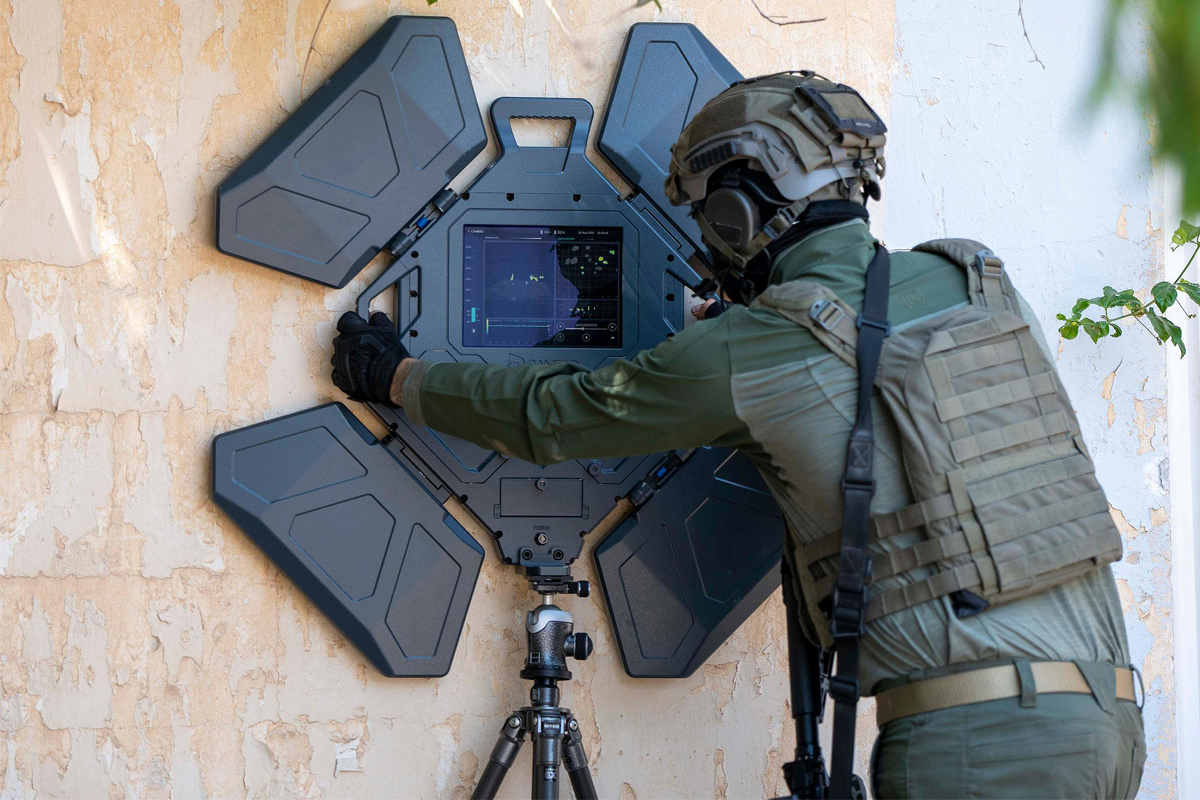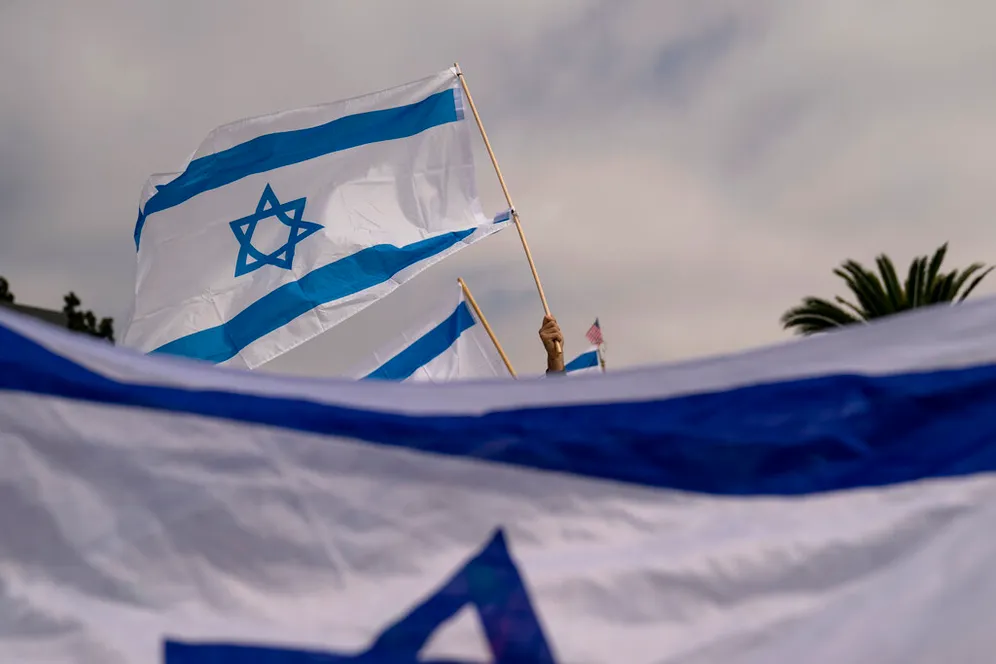IsraelValley vient de l’apprendre. Moshe Arens est mort cette nuit. Arens (en hébreu: משה ארנס, né le 27 décembre 1925 à Kaunas, Lituanie) a été un ingénieur en aéronautique israélien d’origine lituanienne, chercheur, ancien diplomate et homme politique1. Il fut membre de la Knesset entre 1973 et 1992 et à nouveau de 1999 à 2003, il fut ministre de la Défense à trois reprises et fut une fois ministre des Affaires étrangères. Moshe Arens a également été l’ambassadeur d’Israël aux États-Unis et a été professeur au Technion à Haïfa. Il a été membre du parti de droite nationaliste Likoud.
DANS TIMES OF ISRAEL.
Pour le 27e anniversaire des frappes contre Israël de missiles Scud de Saddam en 1991, le ministère de la Défense publie des entretiens avec des hauts responsables expliquant à quel point Israël a failli bombarder Bagdad. Aux premières heures du 18 janvier 1991, alors que la Première guerre du Golfe allait éclater, l’armée irakienne a lancé huit missiles Scud sur Israël. Les frappes sur Tel Aviv et Haïfa ont blessé sept personnes et causé des dégâts importants sur plusieurs bâtiments résidentiels. L’armée de Saddam Hussein a continué à tirer 30 Scuds supplémentaires contre des villes du Centre d’Israël, tuant deux personnes dans des frappes directes et 11 autres indirectement, à cause de crises cardiaques et d’asphyxie. Il y avait une réelle possibilité que Jérusalem puisse mener des frappes aériennes de riposte contre des cibles irakiennes.
Des entretiens réalisés peu après la guerre avec le ministre de la Défense de l’époque Moshe Arens et le chef de l’armée israélienne Dan Shomron, qui ont été déclassifiés des Archives du ministère de la Défense jeudi pour marquer le 27e anniversaire des attaques de Scud, montrent à quel point la menace d’une riposte israélienne était sérieuse. « Au final, Arens a appelé [le ministre américain de la Défense de l’époque Dick] Cheney et lui a dit, ‘OK, nous allons attaquer, enlevez vos avions’ « , s’est-il souvenu.
Dans son entretien, Arens confirme qu’il a dit quelque chose dans le genre. « Je parlais avec Cheney sur une ligne spéciale presque chaque jour. Je lui ai dit : ‘Nous devons attaquer, nous devons nous coordonner’ « , s’est-il souvenu. « Il essayait toujours de m’en dissuader. Il disait qu’il fallait la permission du président et que nous ne l’avions pas, donc nous ne pouvions pas nous coordonner », a expliqué Arens.
Les Etats-Unis étaient opposés à une intervention israélienne dans le conflit, de peur que cela puisse causer des problèmes pour certains membres de la coalition, qui ne voulaient pas donner l’impression de combattre aux côtés d’Israël. La coalition s’est donc engagée dans ce qui a été appelé familièrement une « chasse aux Scuds », cherchant les lanceurs à partir desquels l’armée irakienne lançait les missiles non seulement contre Israël, mais aussi contre l’Arabie Saoudite, y compris lors d’une attaque qui a frappé une base militaire américaine, tuant 28 soldats.
La destruction causée par un missile Scud irakien lors de la première guerre du Golfe en janvier 1991. (Archives de Tsahal du ministère de la Défense). Arens a noté que relativement peu de personnes ont été tuées et blessées en Israël. Il a déclaré que l’on avait le sentiment que « le prochain missile pourrait faire beaucoup de victimes, le prochain missile pourrait être un missile chimique et les Américains n’arrivaient pas à les neutraliser, alors nous devions le faire ». Dans son entretien, Shomron a noté que lui et Arens n’étaient pas toujours du même avis et, s’il présentait au gouvernement des plans pour une attaque, il y était personnellement opposé.
« Si le gouvernement nous avait demandé d’attaquer, nous aurions attaqué, mais je ne recommandais pas de le faire, a déclaré Shomron. Si une heure plus tard, un missile avec des gaz toxiques avait frappé en entraînant de nombreuses victimes, alors j’aurais peut-être recommandé d’attaquer. Je ne disais pas qu’il ne fallait pas attaquer jusqu’à la fin des temps ». Il a reconnu que sa position n’était pas très populaire en Israël à l’époque. « Les gens pensaient, ‘Ils nous attaquent et nous ne répondons pas ?’ C’est le réflexe que la plupart des gens ont. C’est ainsi que nous avons été élevés », a répondu Shomron.
LE PLUS.
|
An Interview with Prof. Moshe Arens
|
.jpg) |
|
An Interview with Prof. Moshe Arens about his Book
Flags above the Ghetto: the Story of the Warsaw Ghetto Uprising
Yediot Aharonot Publications, 2009
Interviewed by Daniela Ozacky
Prof. Moshe Arens has served as defense minister and foreign minister in various Israeli governments and as Israel’s ambassador to Washington. An aeronautic engineer by profession, he is also a recipient of the Israel Security Prize for his contribution to Israeli defense-related development. In the years that have passed since he left the political arena, Arens has spent his time researching and writing a book on the Warsaw Ghetto Uprising.
What made you decide that the relatively popular topic of the Warsaw Ghetto Uprising was in need of further research?
“The Warsaw Ghetto Uprising was an extremely important event in the history of the Jewish people and the history of WWII. Although it has been the topic of a large number of books and articles, I sensed a discrepancy between the prevalent narrative and what actually occurred. This is what motivated me to begin researching the Uprising.”
Tell us how you went about writing the book.
“I spent five years doing in-depth reading of all the sources and working in a variety of archives. I spent the most time in the archive of the Jabotinsky Institute in Israel, which holds a large number of documents about Betar during the Holocaust, as well as a large collection assembled by Chaim and Chaya Lazar. This collection contains many documents on the Jewish Military Organization (or the ZZW, an underground group established by Betar), which operated in the Warsaw ghetto. I also interviewed fighters who survived the Uprising, such as Ziuta Hartman and Fella Finkelstein.”
As you wrote the book, was your perception of a discrepancy between what has been written about the Uprising and what occurred in reality confirmed?
“After going through the sources, I reached the conclusion that most studies on the Uprising either ignored or minimized the role of the fighters of the ZZW, who were led by Pawel Frenkel and his fellow Betar members. German reports also reflect the fact that the main battle of the Uprising was fought at Muranowski Square, where the Zionist flag (today the Israeli flag) and the Polish flag waved as symbols of the struggle against the Germans. This battle was commanded by Frenkel and fought by members of the ZZW. Although Pawel Frenkel and Mordechai Anielevich were the two commanders of the Uprising, Frenkel’s role in the history books is played down and almost invisible in comparison to that of the well-known figure of Mordechai Anielevich..”
Tell Us about Your Book Flags above the Ghetto.
“My book recounts the history of the Uprising: the establishment of the Warsaw ghetto;
the large expulsion of most Jews of the ghetto to the Treblinka death camp; the establishment of the two resistance organizations–the Jewish Fighting Organization (ZOB) and the ZZW and the unsuccessful efforts to unify them; and the story of the Uprising itself.”
Arens was inspired to write Flags above the Ghetto after reading Chaim Lazar’s book The Massada of Warsaw, which was first published in 1963. Although Lazar’s book highlighted the ZZW’s important role in the Uprising, it did not receive significant attention, and the standard narrative of the Uprising, which ignores the contribution of the group’s Betar members, remained in place.
According to Arens: “For revisionists and Betar members in Eretz Israel, it was unthinkable that Polish Betar–the largest Zionist youth movement in Poland prior to the war, whose members were indoctrinated to be militant Zionists and given military and semi-military training–did not play an active role in the Warsaw Ghetto Uprising. But where was the evidence? Pawel Frenkel and Leon Rodal, the leaders of the ZZW, had been killed in the fighting, as were all of the group’s senior commanders. The few survivors from the ranks of the ZZW who made it to Israel were either not members of the Revisionist Movement in the country or did not hold important positions within it. As a result, their voices were never heard.”
Arens’s book contains a number of appendixes, including the daily reports of German S.S. General Jürgen Stroop from Warsaw, which describe the events as they unfolded. Stroop’s final report was submitted on May 16, 1943, and contained the following excerpt: “On April 23, 1943, the ‘High Commander of the Police and the S.S. in the East’ in Krakow issued the Reichsführer-SS’s order to carry out a rigid and merciless search of the Warsaw ghetto, and on this basis I decided to completely liquidate the Jewish residential quarter by burning down all the residential blocks, including the residential block next to the munitions factory. According to this system, factory after factory was evacuated and then lit ablaze. At this point, the Jews would almost always emerge from their hiding places and their bunkers. It even happened, and not infrequently, that Jews remained inside burning homes until they chose to jump from the highest floors due to the heat and the fear of burning to death…”
The book’s third appendix–Stroop’s Weisbaden Report, which the S.S. officer wrote after being taken prisoner by American forces toward the end of the war–details Stroop’s work in the Warsaw ghetto. In this report, which is dated May 1, 1946, Stroop wrote: “I feel obligated to point out that it the Polish police in particular carried out the tasks assigned to them in an exemplary manner and without hesitation.”
Moshe Arens, Flags over the Ghetto: the Story of the Warsaw Ghetto Uprising, Yediot Aharonot, 2009.
|

.jpg)




